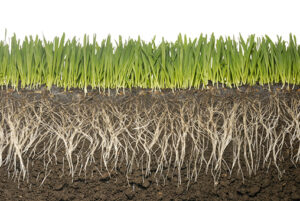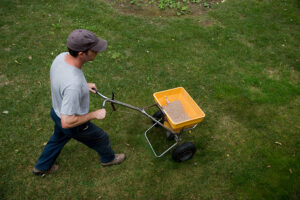Want to understand what it takes to develop a lush green lawn?
You first need to understand the growing habits of cool-season turf grass, which is the predominant type of grass that you’ll find growing in New Jersey.

Each spring, grass wakes up with all the carbohydrates it will initially need stored in its roots, having manufactured these nutrients the previous fall.
If left alone, grass would grow up to the point where it would produce seed heads that contained the seeds for the next generation.
That’s grass’ priority: to push top growth to produce seeds. As spring goes on, the grass will eat up its nutrient reserves and feed off the carbohydrates it is manufacturing in the green leaf.
Grass is like any other organism: it will support its next generation at the cost of its own health.
Because carbohydrates are produced in the green leaf, mowing too short in spring will hurt the lawn’s nutrient-producing ability. And over-fertilization can stimulate excessive top growth that an already taxed root system cannot keep up with. A healthy, productive grass doesn’t need a lot of fertilizer. Light fertilization is all that’s necessary.
Once the growing season reaches the point where the grass would have produced seed if left to its own resources, it will then concentrate on its own survival. It will start to increase carbohydrate production and store nutrients for the following season.

This will happen around Labor Day, when nighttime temperatures begin to drop and grass growth increases. Grass will start to grow thicker and laterally, still concentrating on top growth. It’s the ideal time to apply seed and fertilizer. You can apply more fertilizer than you would have in spring.
As temperatures continue to drop and top growth abates (between Halloween and Thanksgiving), your grass will shift its focus almost exclusively to root development, which continues until the ground freezes.
As the roots get deeper and grow in volume, the grass is better suited to store nutrients for the spring. Now is the time for a second application of fertilizer to maximize carbohydrate and root development.
If you want to know more about developing an effective fertilizer program, Mendham Garden Center can help. Visit one of our three New Jersey locations (Mendham, Annandale, and Chester), where you’ll find the expertise and products you need to keep your grass healthy this season.

